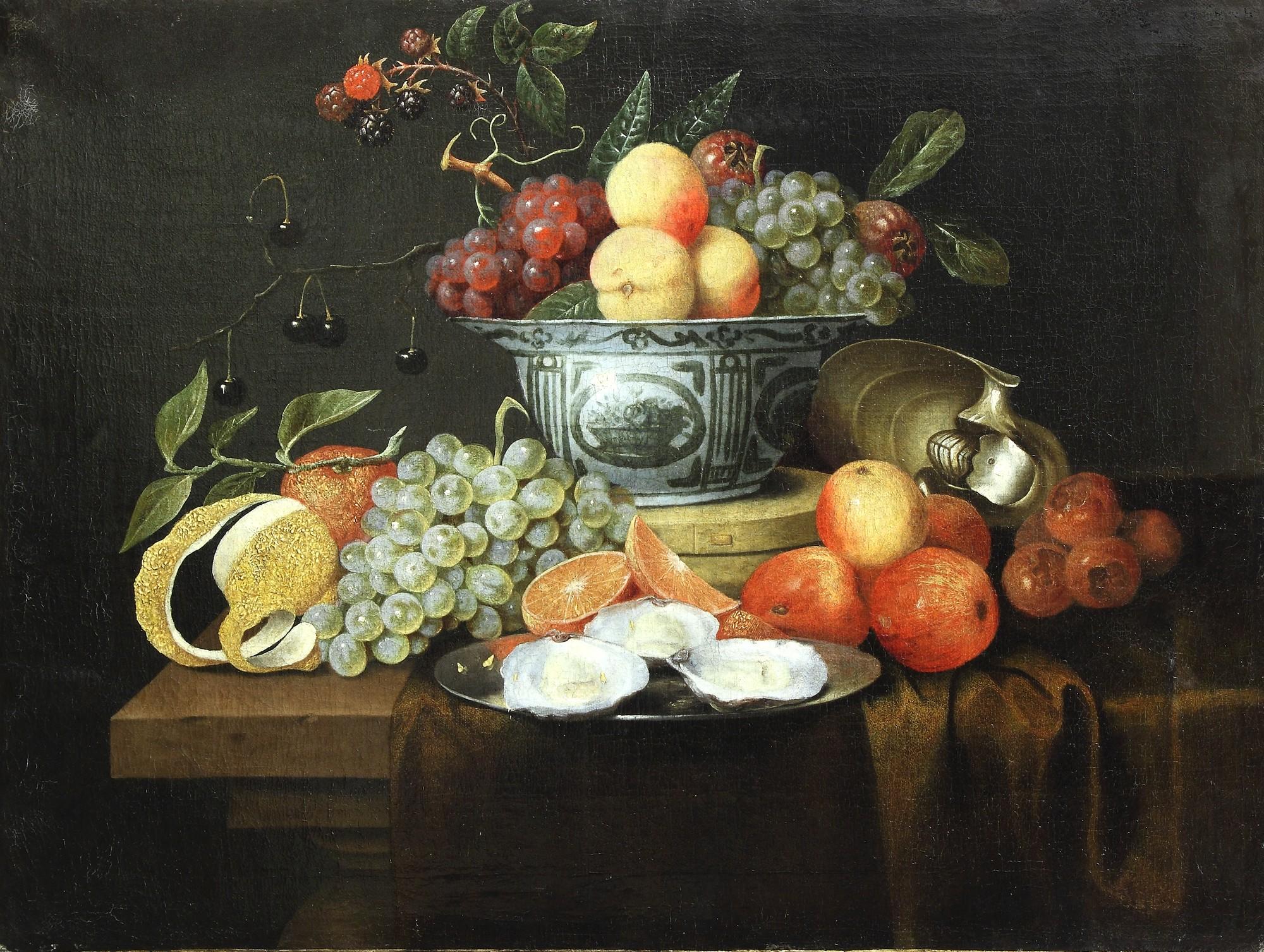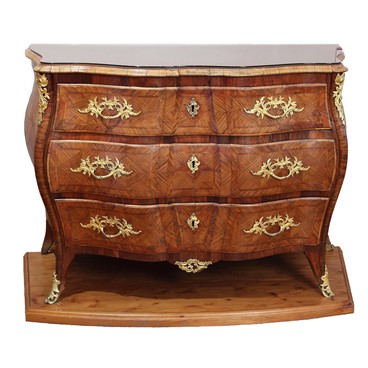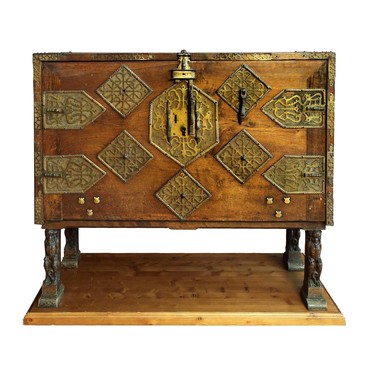Joris van Son created his Still-life with Fruit in a Wan-Li Porcelain Bowl and Oysters on a Plate in 1658–1659. He painted a table full up of fruit. The artist emphasized the tangibility of the objects: the lemon peel looks rough, the apples are shining smoothly. Near the edge of the countertop, the artist placed a plate with three oysters on it.
1 / 3
Still-Life with Fruit in a Bowl and Oysters
Время создания
1658–1659
Размер
58,5x78 cm
Техника
Oil on canvas
Коллекция
Выставка
#1

Joris van Son
Still-Life with Fruit in a Bowl and Oysters
#2
#3
One can read any of the 17th-century Dutch still-life works like that of a fascinating book, as every detail there is determined to symbolize something. For example, the oysters in the picture mean more than just an expensive and tasty dinner. It was obvious to any European man of that era that the goddess of love, Venus, had birthed from an oyster shell; the oysters were considered to be a symbol of love pleasures.
#4
Sandro Botticelli, Birth of Venus
#6
Sometimes, symbols had two or even more meanings. For example, a lemon in this still-life is of a double-natured character. It was believed to signalize deceit, as it looks beautiful outside, being sour in taste. If one takes into account the piety of the people of the 17th century, one will easily foresee the second meaning. The lemon peel coming down onto the table in a spiral way symbolizes nothing but the human soul departing its body.
#5
The evanescent essence of life was running through most still-lives with a red thread. The viewer ought to comprehend that pleasure is temporal, and one ought to ‘bear eternity in mind’. For example, in Joris van Son’s picture, the ripe and red blackberries are clustering on the same branch, which is an allusion to transience of time.
An apple is a Biblical fruit that is simultaneously promising the Paradise Gardens and the Fall. Let the oysters be hinting at the pleasures of the flesh, nonetheless, their shells are abandoned bodies, something that is empty.
#7
An opened oyster could easily be turned into a symbol of the Soul Salvation; after all, it is just a shell being ready to give its soul to the Lord.
#8
There were no standing rules of reading still-life works. Besides, being near-by at each other, the symbols were easy to combine to give completely different rules.
#9
The Netherlands of the 17th century was the particular place, where still-life had become a separate genre of country’s oeuvres. Prior to that, the inanimate objects were considered to be just the part of the paintings with more serious subjects. The word still-life did not even exist in the 17th century; the Dutch called those paintings ‘stillleven that stood for quiet life. Nature was killed in France 100 years after with the term nature morte, which literally means dead nature, and which was not used in the Netherlands.
#10
Joris van Son is a representative of the Flemish still-life school. In the 17th century, Holland and Flanders split up to go on their completely different ways; with Realism being developed in Holland and flamboyant Baroque style being flourished in the Flanders. That was why the Dutch still-life paintings were notable for their restrained style; most of them were executed with the unified approach of using the tone and the focus on each detail.
#11
Willem Claesz. Heda, Breakfast with a Crab
#12
The Flemish stillleven were quite far from to be a quiet life; they were bright in colors and dynamic in compositions with expensive tableware and gourmet dishes. The pictures were often overfilled with images that were almost falling over the edges.
#13
Ian Davids de Hem. Still Life with Fruits and Lobster. 1648-1649.
#14
Joris van Son’s oeuvres are featured as the luxurious Flemish still-life paintings.
#15
Yaroslavl Museum of Fine Arts
читать дальшескрыть
00:00
00:00
1x
Still-Life with Fruit in a Bowl and Oysters
Время создания
1658–1659
Размер
58,5x78 cm
Техника
Oil on canvas
Коллекция
Выставка
Открыть в приложении
Поделиться





